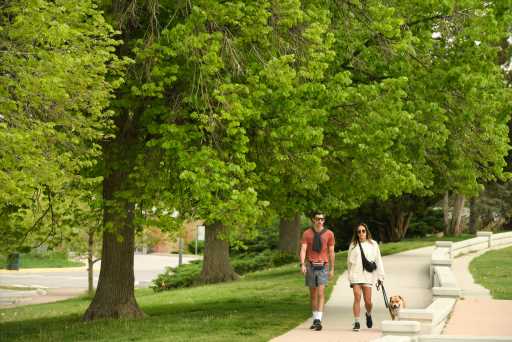The grass in Denver’s parks will be cut less often this summer. There’ll be fewer flower beds, and trash will be picked up less frequently even as the city’s residents flock to the more than 250 open spaces.
Each spring, Denver’s parks department hires about 200 part-time staffers, Deputy Director Scott Gilmore said. But the pandemic cut into the city’s budget, forcing the department to slash about $9.4 million — in the form of not hiring many seasonal workers for parks maintenance and keeping full-time positions vacant.
Currently, the department has about 100 part-time workers on hand and enough money for 30 more, but Gilmore said many former summer workers found jobs elsewhere.
The shortage is apparent across the city. One restaurant manager said he’s noticed more trash near the eastern edge of Sloan’s Lake, while a longtime Montbello resident said her neighborhood parks were neglected well before the pandemic began. Even parks staff have noticed a difference and miss seeing the flowers they once planted.
“It kills me,” City Park Operations Supervisor Joe Renteria said, shaking his head. “The park just doesn’t look the same.”
With those cuts, existing employees have had to pick up the slack.
Renteria, like his colleagues, speaks of the parks for which they care with pride. Not a single employee is above picking up a piece of trash, he said.
While Renteria said some people have complained about the appearance of one park or another, those comments are few and far between. Of the 400 people he estimates he spoke to in the past year, perhaps two were negative.
General Manager Alex Stephenson, the general manager of Rupert’s at the Edge, which is just east of Sloan’s Lake, said customers haven’t complained, but he’s recently noticed a bit more trash and fewer flowers around the park in recent months.
Stephenson wondered whether the increase of trash comes from people digging through garbage cans, which are emptied less frequently.
Similarly, Ann White, president of the neighborhood organization Montbello 20/20, said she’s noticed more trash and unkempt lawns in her neighborhood parks for the past few years — pointing specifically to Silverman Park. The pandemic feels like a new excuse from city officials to ignore the northeast Denver neighborhood, she said.
“It doesn’t make us feel very good, especially those of us that have been out here for years. We invested in our homes, we pay our taxes,” White said. “We feel like we’re the stepchild of the city in so many ways.”
Historically, some neighborhoods and their parks have received less care than others, Gilmore acknowledged. But the department is moving forward with a focus on equity, said Gilmore, who is also a Montbello resident and disagreed with White’s assessment of the green spaces in their neighborhood.
Regional parks like City Park draw in more people from around the city, he said, and the department is using up to 45% more trash bags there and in other major parks.
Staff might pick up trash at City Park daily but only make it to the smaller parks three times a week, parks department field superintendent Adam Smith said. That’s because fewer people use community parks, like Fred Thomas Park, or the smaller pocket parks that take up less than an acre.
It’s also just the nature of fewer employees and less money to go around, Smith said, though he noted park users should take most of their trash home with them just like they would at many mountain parks and trails.
While there might be a bit more trash underfoot, some fountains will remain shut off and about half the city’s planters will go bare or with easier-to-maintain flowers, but in general Smith said Denver’s park systems remain in good shape. After all, the grass is green and the trees are alive.
“If 10,000 people are in City Park over a weekend and I only hear from three or four, I think that’s pretty good,” Smith said.
Despite recent cuts, the nonprofit Trust for Public Land ranked Denver’s park system as among the country’s best: 18th in the organization’s annual ParkScore Index, up four places from last year. The city allocates about $132 per person for parks, compared to the national average of $96 per resident. And 90% of Denver residents live within a 10-minute walk of a park, well above the national average of 75%, the index showed.
Still, Renteria said, he’s looking forward to the days when his department can hire more people and the pandemic no longer has a hold on the city’s budget — days when the city’s lawns will be trimmer and his beloved flower beds will bloom once more with the beautiful colors to which he and the rest of the city have become accustomed.
Source: Read Full Article


